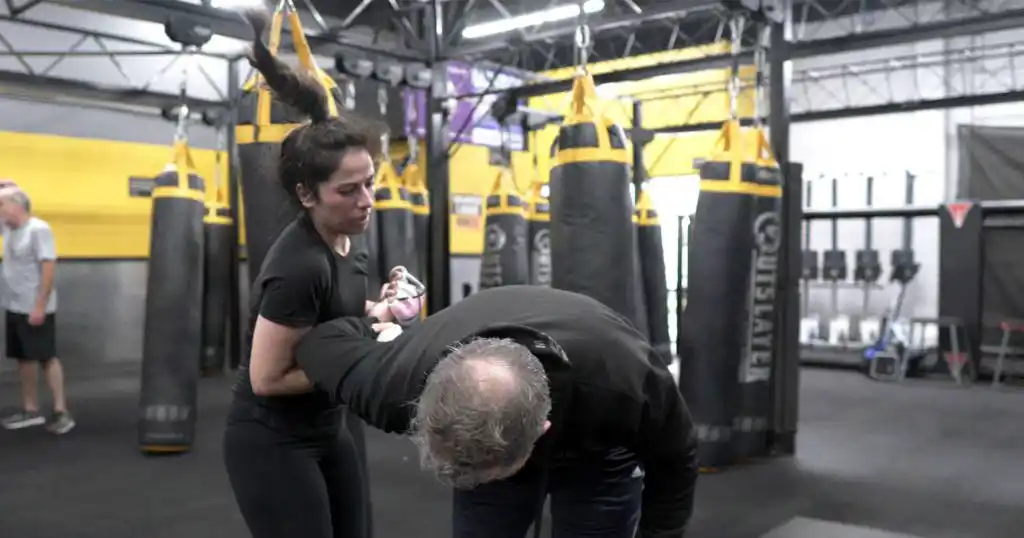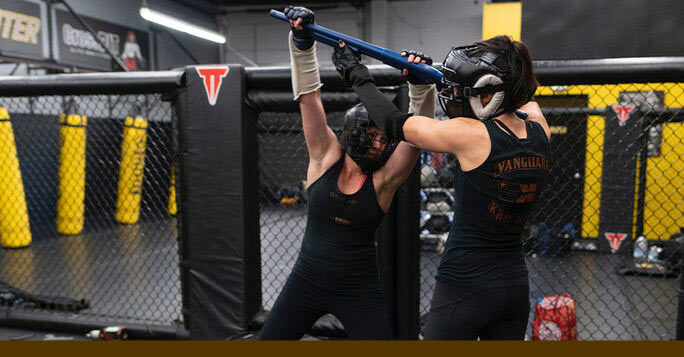
If you’re considering self-defense training, you’ve probably wondered: “Are Krav Maga classes actually worth it?” It’s a fair question, especially when you’re looking at monthly fees, time commitments, and wondering if you’ll actually learn skills that matter.
As someone who’s been involved in Krav Maga training, I want to give you an honest, practical answer. The short version? Yes, quality Krav Maga classes are absolutely worth it– but with some important caveats about what makes training valuable.
What Makes Krav Maga Different from Other Martial Arts
Let’s start with what you’re actually getting when you sign up for Krav Maga classes.
Unlike traditional martial arts that focus on forms, competitions, or philosophical elements, Krav Maga is brutally practical. It was developed by the Israeli military for real-world survival situations. Every technique you learn has one goal: getting you home safely.
Here’s what that means in practice:
- No flashy moves – Everything is designed to work under stress
- Aggressive counter-attacks – You learn to overwhelm an attacker quickly
- Situational awareness – Classes teach you to avoid problems before they start
- Stress training – You practice techniques when tired, distracted, and under pressure
This isn’t about looking cool or winning tournaments. It’s about developing instincts that could save your life.
The Real Benefits You’ll Get from Quality Krav Maga Training
1. Practical Self-Defense Skills That Actually Work
In quality programs, you’ll learn to defend against:
- Chokes and grabs from multiple angles
- Armed attackers (knives, guns, improvised weapons)
- Multiple attackers in confined spaces
- Ground fighting when you can’t stay on your feet
These aren’t theoretical scenarios. These are situations that happen to real people, and you’ll practice them until your responses become automatic.
2. Physical Fitness That Serves a Purpose
Forget boring cardio machines. Krav Maga training will get you in the best shape of your life while building functional strength. A typical class includes:
- Combative conditioning that builds explosive power
- Cardio that simulates real stress (like the “burpee mile” we use in testing)
- Functional movement that improves your daily life
- Mental toughness that carries over everywhere
3. Confidence That Comes from Competence
There’s something powerful about knowing you can handle yourself. Students often tell me that Krav Maga changed how they carry themselves in the world. You walk taller, speak up more, and don’t worry as much about being in unfamiliar places.
This isn’t false bravado – it’s earned confidence based on real skills.
4. Stress Management and Mental Clarity
Krav Maga training puts you in controlled stressful situations. Over time, you learn to think clearly under pressure, make quick decisions, and stay calm when things go wrong.
These skills don’t just help in physical confrontations. They help in job interviews, difficult conversations, and any high-pressure situation life throws at you.

What to Look for in a Quality Krav Maga Program
Not all Krav Maga classes are created equal. Here’s what separates legitimate training from “McDojos”:
Structured Curriculum and Testing Standards
Quality programs have clear progression systems. Students should advance through specific levels, each building on the last. Look for schools that:
- Have detailed curriculum outlines for each level
- Require minimum class attendance before testing
- Use standardized testing procedures with multiple instructors evaluating
- Maintain strict grading standards (not everyone should pass every test)
Reality-Based Training Methods
Your classes should include:
- Scenario-based training that simulates real attacks
- Stress inoculation through intense physical conditioning
- Multiple attacker situations and confined space training
- Weapon defense starting at beginner levels
Qualified Instructors
Legitimate Krav Maga instructors should have:
- Certification from recognized organizations (not just weekend workshops)
- Ongoing training requirements to maintain their credentials
- Real-world experience or military/law enforcement background
- Focus on safety while maintaining training intensity
Progressive Physical Conditioning
Quality programs include serious fitness components:
- Combative conditioning drills that build functional strength
- Cardiovascular training that prepares you for real confrontations
- Flexibility and mobility work to prevent injuries
- Mental toughness training through challenging workouts
The Investment: Time, Money, and Effort
Let’s be honest about what you’re signing up for.
Time Commitment
- 2-3 classes per week minimum for real progress
- 60 minutes per class including warm-up and conditioning
- Several months to a year to develop basic competency
- Years to achieve advanced skills (like any worthwhile pursuit)
Financial Investment
Quality Krav Maga training isn’t cheap, but consider what you’re getting:
- Professional instruction from certified experts
- Structured curriculum developed over decades
- Equipment and facility costs for proper training environment
- Insurance and safety measures for contact training
Compare this to personal training, therapy, or other investments in your health and safety. Most students find the value far exceeds the cost. For example, for our Krav Maga program, it’s only $99 per month. This gives you access to over 50 Krav Maga classes a month!
Physical and Mental Effort
This isn’t a gentle yoga class. You’ll:
- Work up a serious sweat every session
- Practice techniques repeatedly until they become instinctive
- Push through mental barriers when you’re tired or frustrated
- Face your fears about violence and conflict
Who Should (and Shouldn’t) Take Krav Maga Classes
Krav Maga Is Great For:
- Anyone wanting practical self-defense skills
- People looking for intense, purposeful fitness training
- Those who want to build real confidence
- Individuals in higher-risk professions or living situations
- Anyone tired of traditional gym routines
Krav Maga Might Not Be Right If:
- You’re looking for gentle, low-impact exercise
- You want meditation or spiritual elements in your training
- You’re not comfortable with contact or aggressive training
- You’re seeking competition-based martial arts
Red Flags: When Krav Maga Classes Aren’t Worth It
Avoid programs that:
- Promise unrealistic timelines (“Black belt in 6 months!”)
- Focus on flashy techniques over practical applications
- Don’t include serious physical conditioning
- Lack clear curriculum or testing standards
- Have instructors with questionable credentials
- Avoid contact training or stress scenarios
The Bottom Line: Making Your Decision
Are Krav Maga classes worth it? Absolutely yes – if you find a quality program and commit to the training.
The skills you’ll learn could literally save your life or the life of someone you care about. The fitness you’ll develop will improve your health and energy. The confidence you’ll build will positively impact every area of your life.
But this isn’t something you can half-commit to. Krav Maga rewards those who show up consistently, push through discomfort, and take the training seriously.
Your Next Steps
If you’re ready to explore Krav Maga training:
- Research local schools and their instructor credentials
- Observe a few classes to see the training style and intensity
- Ask about curriculum structure and advancement requirements
- Talk to current students about their experiences
- Try an introductory class to see if it’s right for you
Remember: the best self-defense is the kind you never have to use. But if you ever need it, you’ll be grateful you invested in quality training that prepared you for reality.
Ready to start your Krav Maga journey? Sign up for a free two week trial!